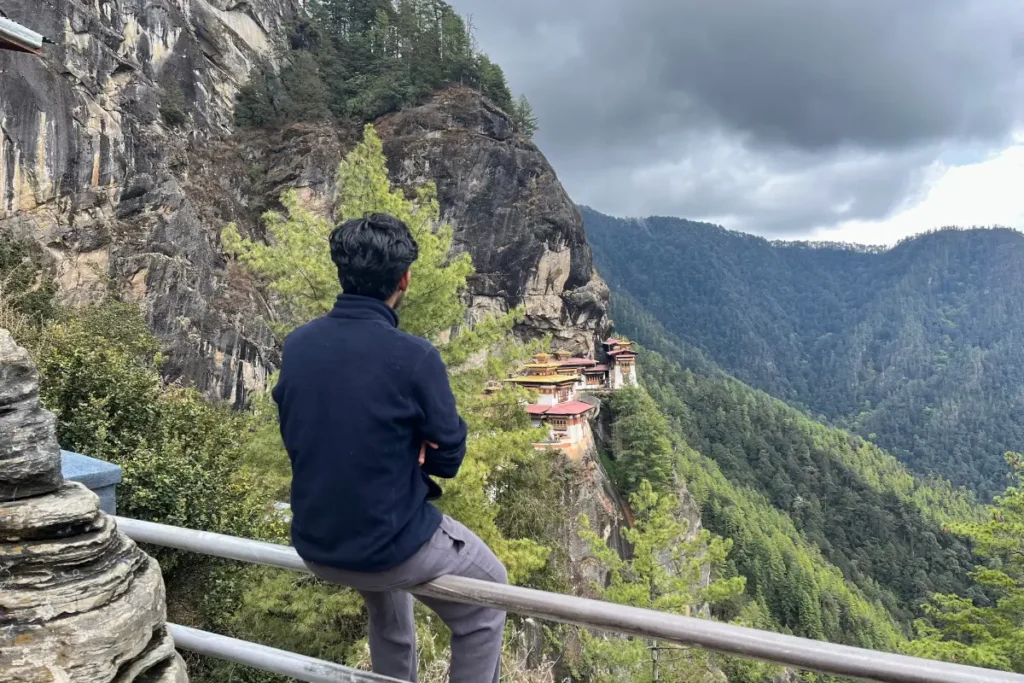
Tiger’s Nest Hike is one of Bhutan’s most iconic and unforgettable adventures.
The Tiger’s Nest Monastery, also known as Paro Taktsang,
“Taktsang” is a Tibetan word broken down as:
• Tak = Tiger
• Tsang = Nest or Lair
So, Taktsang = Tiger’s Nest, is one of the most iconic destinations in Bhutan. Even travelers exploring Bhutan at a fast pace manage to find time to visit this site. The reason is simple, witnessing the Tiger’s Nest is truly marvelous.
Perched dramatically on a cliffside 900 meters above the valley floor, the Tiger’s Nest Monastery is a breathtaking cluster of sacred buildings. Its striking beauty and awe-inspiring location make it an unforgettable sight. A journey to Bhutan feels incomplete without witnessing the magic of the Tiger’s Nest.

If you’re thinking about a trip to Bhutan, go for it! It’s truly one of the most incredible places on Earth. Keep reading to discover everything you need to know about hiking to the Tiger’s Nest, one of Bhutan’s most iconic and unforgettable spots.
Table of Contents
Why Is the Tiger’s Nest So Special?
The Tiger’s Nest Monastery sits near the town of Paro in Bhutan. This Buddhist site was built in 1692 around the cave where Guru Rinpoche first meditated, an event that introduced Buddhism to Bhutan. The name “Tiger’s Nest” comes from a legend that Guru Rinpoche was transported here from Tibet on the back of a tigress.
Today, the monastery comprises four temples along with living quarters for the monks. Despite welcoming daily tourists, Paro Taktsang continues to operate as an active monastery.
How to Reach Tiger’s Nest Monastery
The Tiger’s Nest Monastery lies 10 miles north of Paro and is just a 20-minute drive, making Paro an ideal place to stay before your visit. As most travelers enter Bhutan through organized tours, transportation to the monastery is typically included in your itinerary.
Visiting the Tiger’s Nest Monastery is a full-day experience. The round-trip hike takes about four to five hours, plus an additional hour to explore the monastery. Many visitors also stop at Taktsang Cafeteria along the way for a quick break. Plan to leave Paro around 9:00 AM and return to your hotel by 4:00 PM.
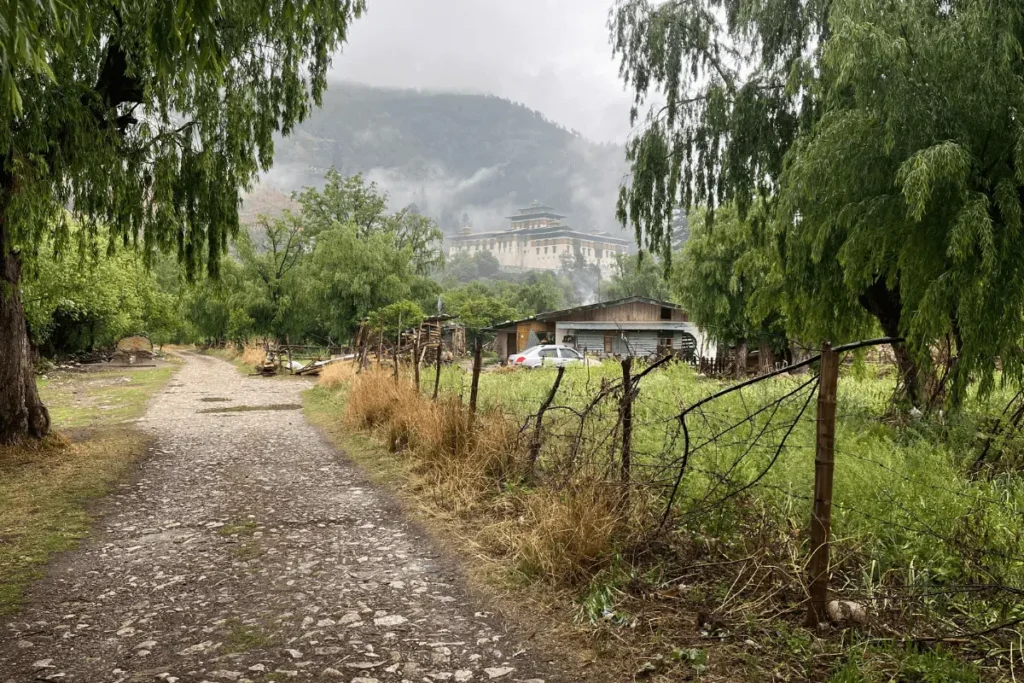

Guide to Hiking Tiger’s Nest Monastery
Tiger’s Nest Monastery can only be reached by hiking, as vehicles are not allowed on the trail. For those who can’t hike the full distance, horses can be hired to take you most of the way to the top. However, I always recommend hiking if you’re able, the trail isn’t very difficult, and the experience is truly unforgettable.
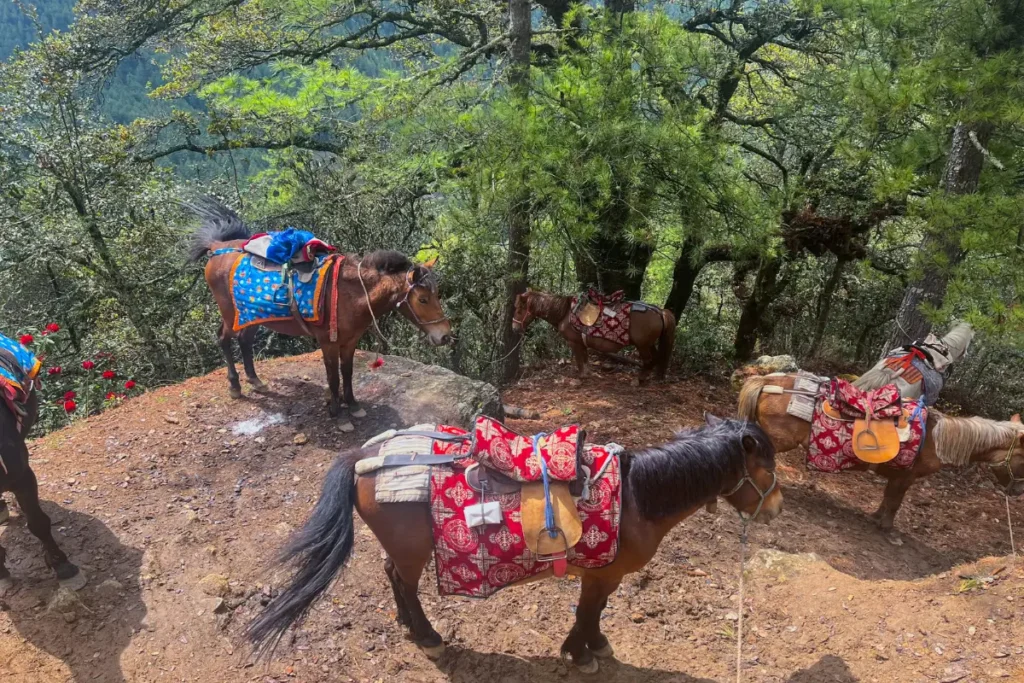
Tiger’s Nest Hike Details
- Distance: 6.4 km (4 miles) round trip
- Total Ascent: 520 meters (1,700 feet)
- Highest Elevation: 3,120 meters (10,232 feet)
- Time: 5 to 7 hours for the entire visit
Tiger’s Nest Hiking Guide
The hike begins at the base of the mountain near the car park, where you’ll find locals selling souvenirs and hiking poles. This is also the spot where you can hire a horse if needed.

The trail starts by crossing a meadow, and then the real climb begins through a forest of oak, tall pine trees, and rhododendrons. Tree roots stick out of the ground, which can actually help give you grip as you hike.
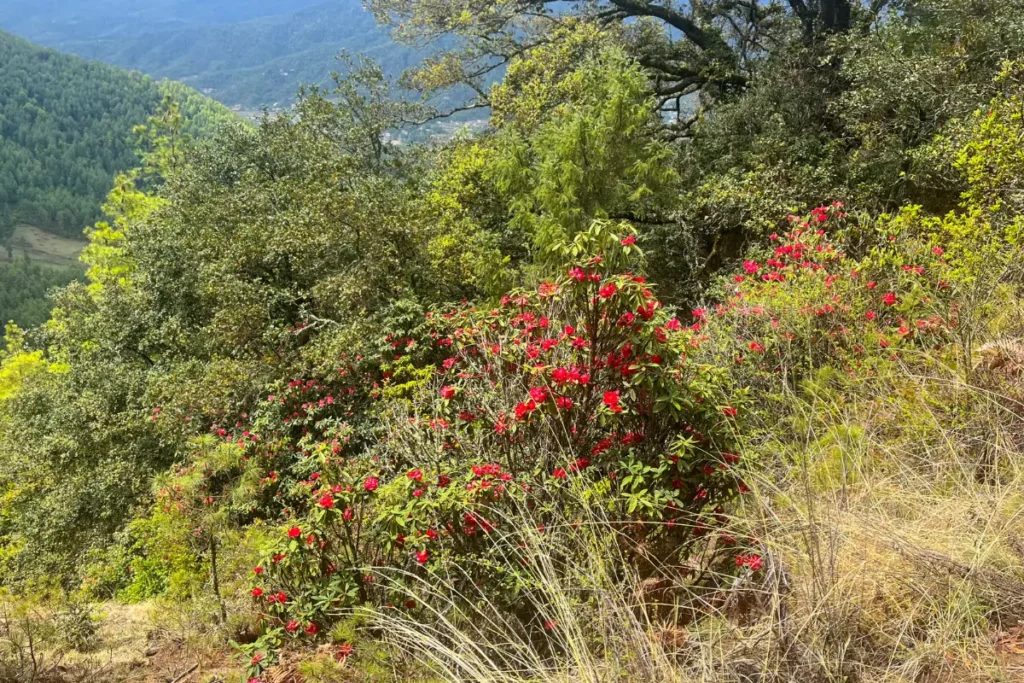
A row of prayer wheels, placed in small rooms built in traditional Bhutanese style, was the first man-made structure I passed. My guide gave me a brief explanation, saying they are turned by flowing water and spin continuously, 24/7, as a form of ongoing prayer.

After you pass through the tall pine trees, the prayer wheel area, and a gentle waterfall, you’ll finally see your first view of the Tiger’s Nest. Perched high on the cliff, it looks both distant and magical. In just a few hours, you’ll find yourself right up there.
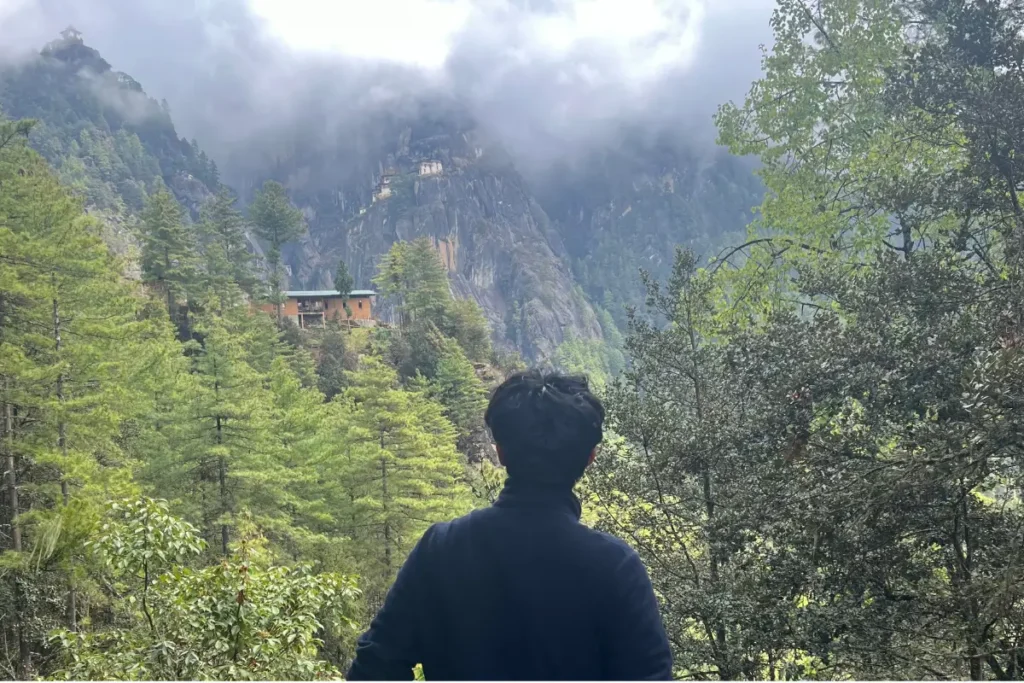
While trekking, I met a lot of people on the trail. It’s great to see how they are enjoying their time, even at that age, it’s truly inspiring.
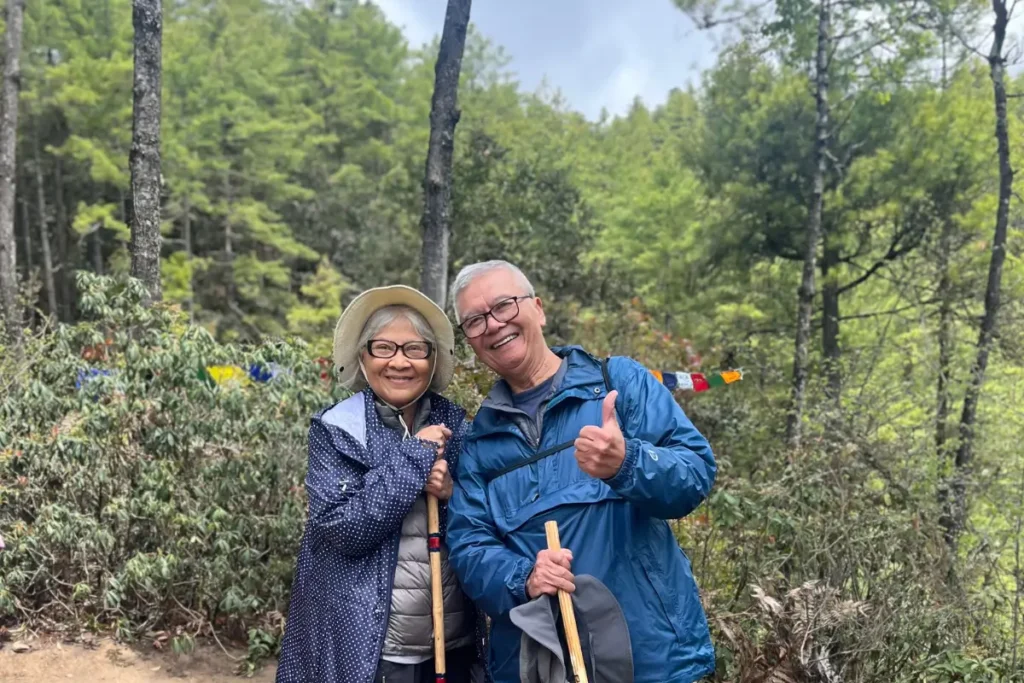
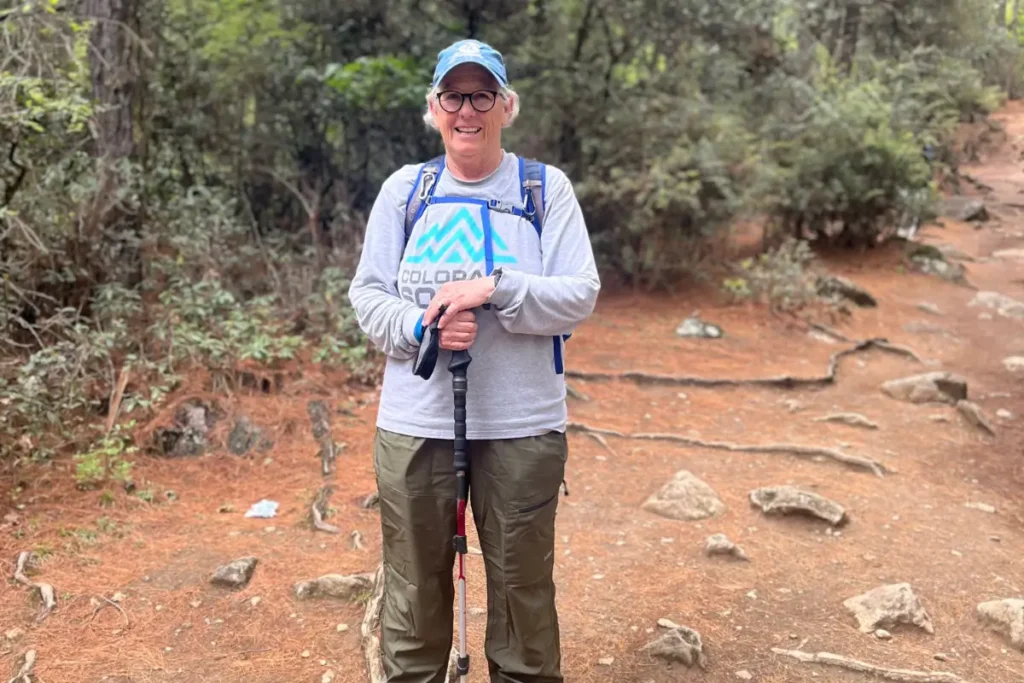
Halfway through the hike, you finally reach Taktsang Cafeteria, a perfect spot to rest with stunning views of the Tiger’s Nest. It’s a great place to relax, sip some tea, and enjoy the peaceful surroundings. I took a short break here before continuing the magical climb.
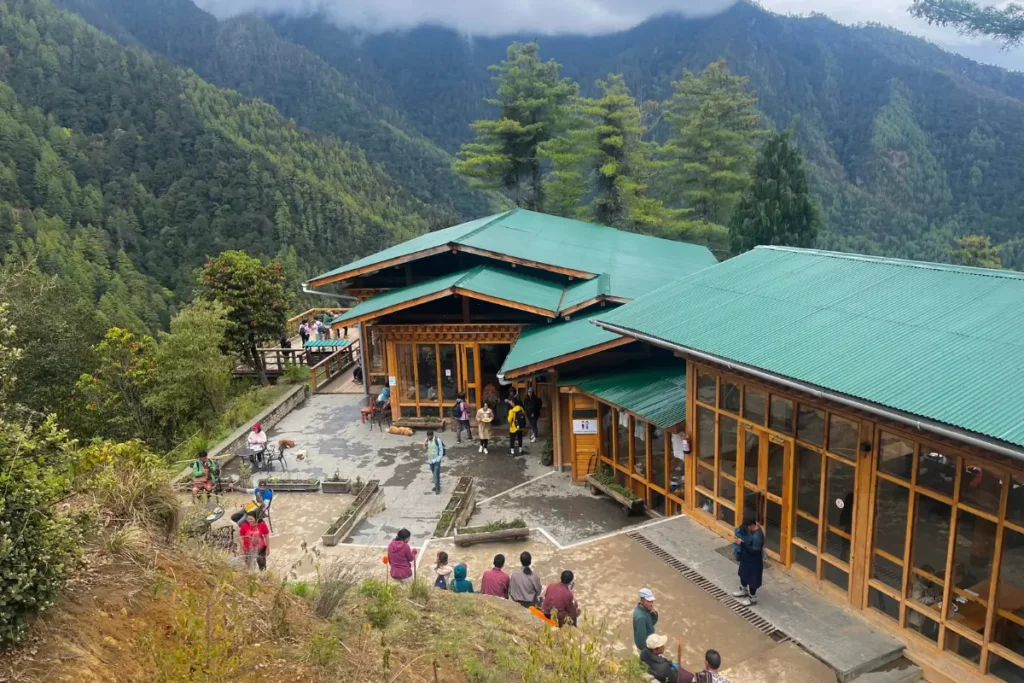
On the way up, you’ll walk beneath streams of colorful prayer flags swaying gently above. With every step, the view over the valley grows more breathtaking. The landscape becomes more stunning the higher you go.

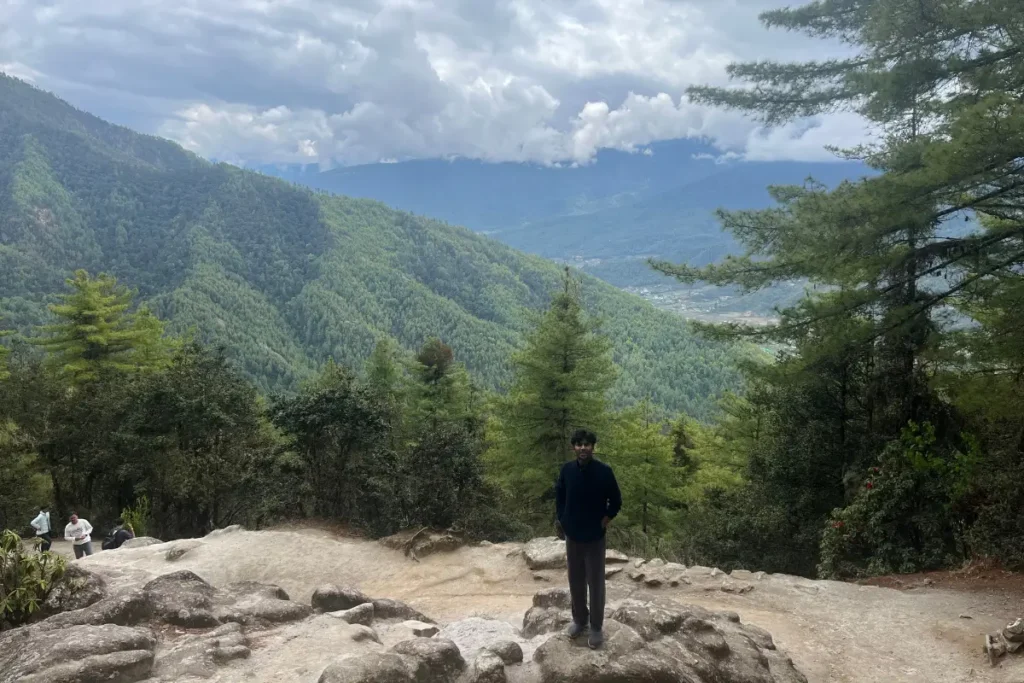
The Tiger’s Nest View Point

The journey from Taktsang Cafeteria to the viewpoint overlooking Tiger’s Nest stands out as a truly unforgettable part of the trek. It’s only about 1.5 km, but the trail gets steeper, and the air feels thinner as you climb. Surrounded by pine trees and colorful prayer flags, the path feels both peaceful and powerful, each step brings you closer to something truly special.
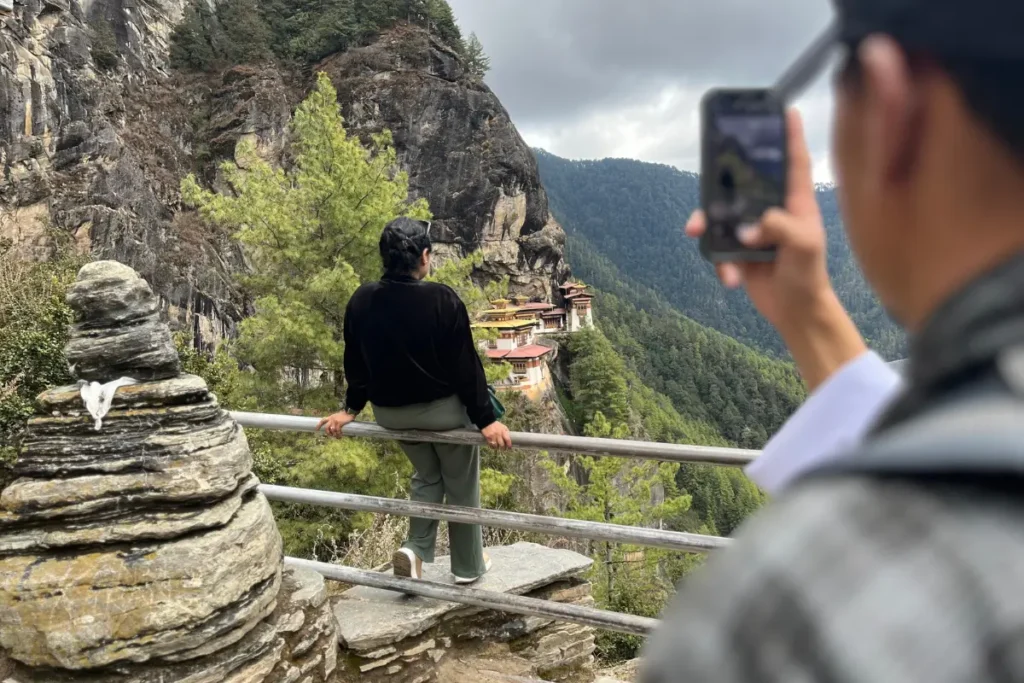
As you make your way uphill, the view of Paro Taktsang slowly comes into full focus. When you reach the viewpoint, you’re treated to the most iconic and breathtaking sight of the monastery, perched dramatically on the cliffside, often wrapped in mist and clouds. Many pause here, not just for the perfect photo, but to simply sit, breathe, and take in the powerful energy of this sacred place.

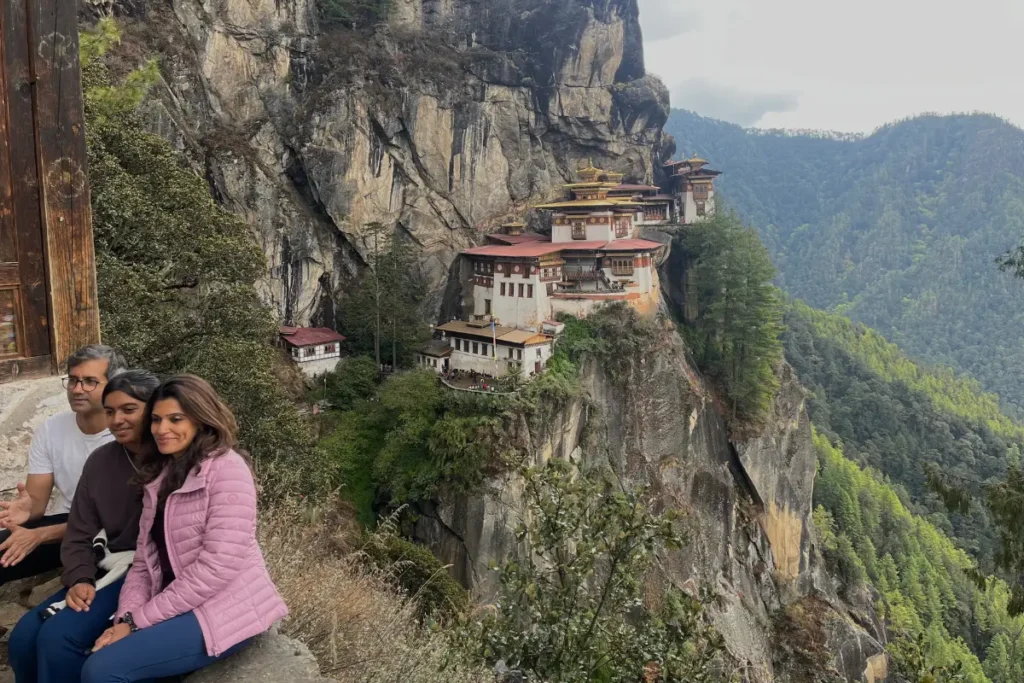
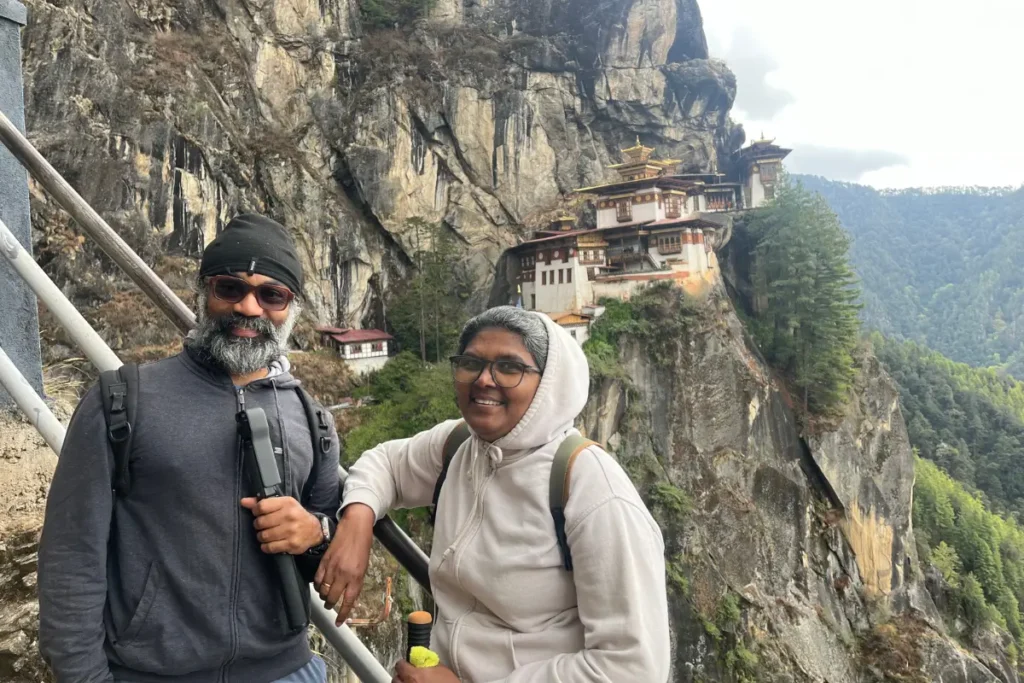
For Bhutanese pilgrims, this part of the journey is deeply sacred, offering a profound sense of connection to Guru Rinpoche’s blessings. Taktsang is one of the most venerated places of pilgrimage in the Himalayan world, and within it, there are thirteen holy places. However, most people only go to the one called Taktsang Pelphug, where Guru Rinpoche meditated.
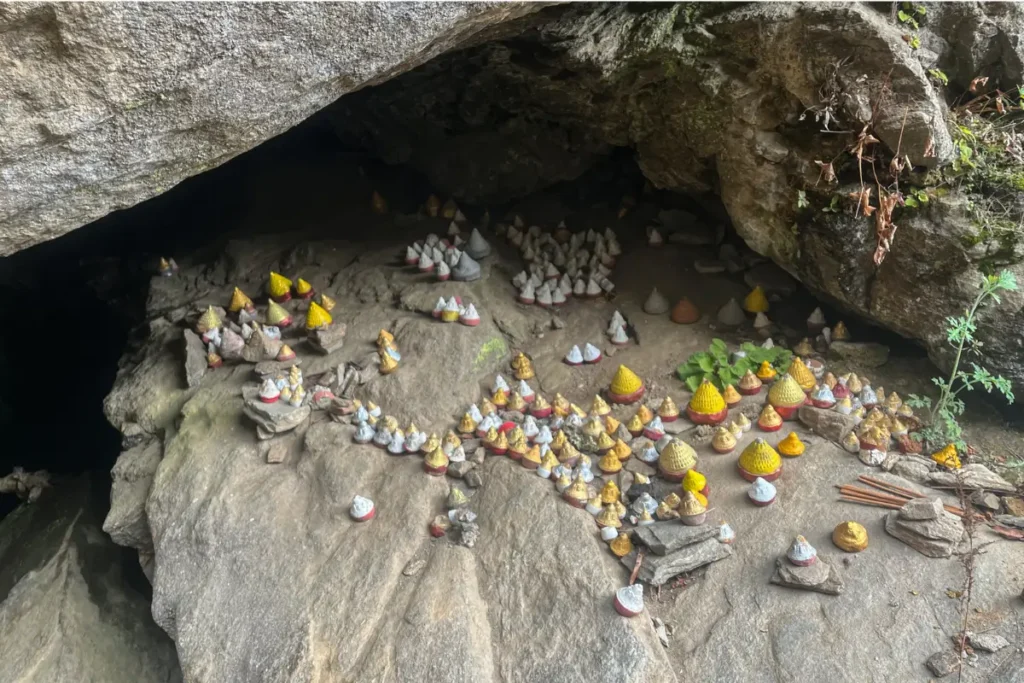

Stepping into the Monastery
Finally, you’re entering the majestic Taktsang Monastery, marking the end of your unforgettable hike. Entry requires a ticket, which you must purchase at the base for 1000 Nu. The monastery is a sacred complex of temples and shrines, linked by stairways and bridges. Inside, a monk will guide you through halls filled with incense, flickering butter lamps, and powerful statues of Guru Rinpoche.

While I was walking inside the monastery, I got a chance to talk to a monk. I was curious, so l asked him some questions about the monastery. He kindly shared many interesting things about its history and why it’s so special. (Photography is strictly prohibited inside)
As I was leaving, he gave me a scarf with Buddhist writings on it and a small piece of chocolate. With a warm smile, he said. “Enjoy your journey, Follow your peace.”
Useful Tips
Best Time to Visit the Tiger’s Nest
The ideal time to visit the Tiger’s Nest is from October to December, when the skies are clear and the air is cool, just like it was during our mid-October visit. Winter brings crisp, clear weather too, though it can get quite cold. Spring is another pleasant option with milder temperatures. From May onward, it starts to heat up, and the monsoon season typically runs from June to September, bringing heavy rains.
How Fit Do You Need to Be for the Hike?
Anyone with average fitness can complete the Tiger’s Nest hike, compared to my Everest Base Camp Trek, this felt much easier. Just take it slow, it’s not a race. Hiking poles can be helpful, especially on the way down to ease the strain on your knees.
What to Pack for the Hike
Wear comfortable hiking shoes, bring enough water, a few snacks, and your camera to capture the views. You can stop for tea, lunch, and a quick refresh at the Taktsang Cafeteria.
Do you have any questions about hiking to Tiger’s Nest? Feel free to comment below! Have you experienced its beauty? We’d love to hear your thoughts.


